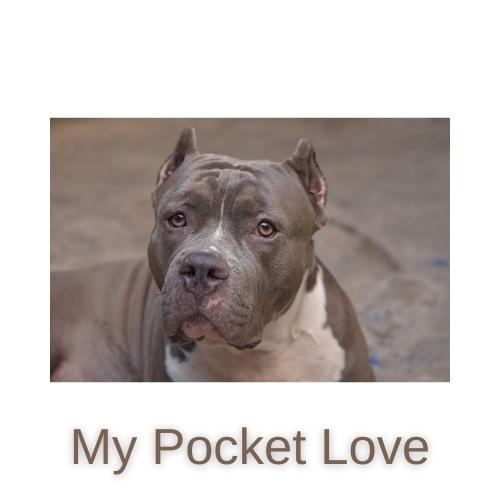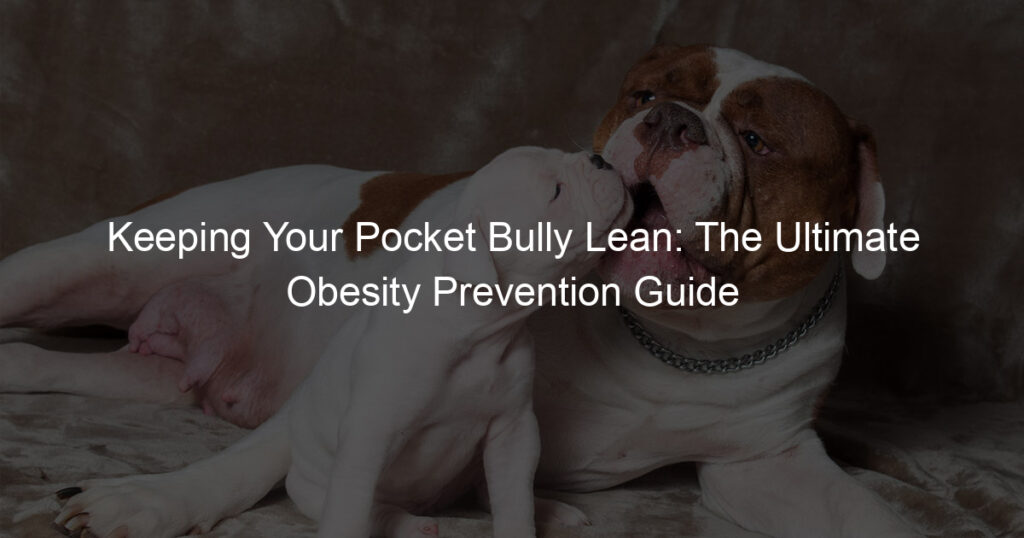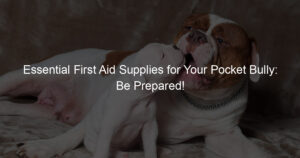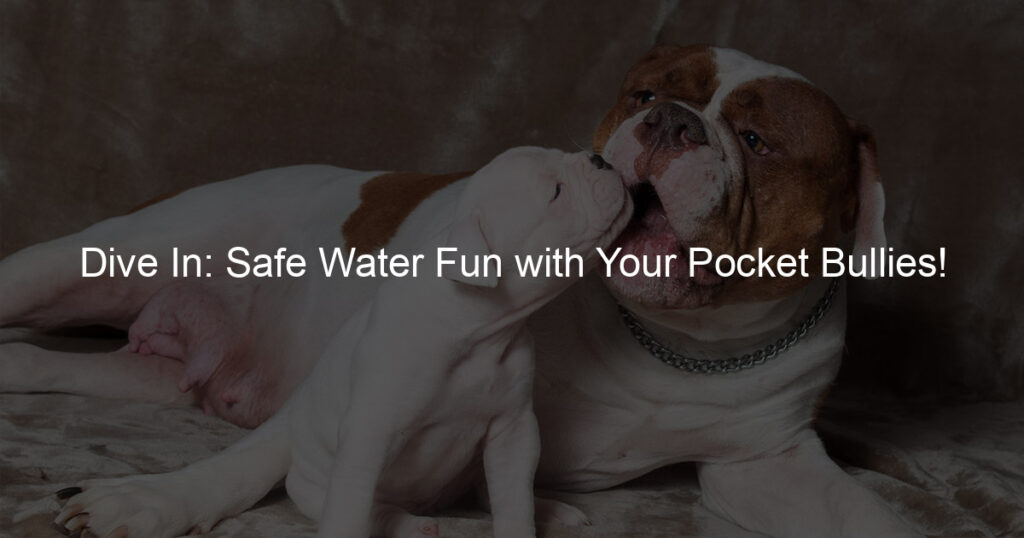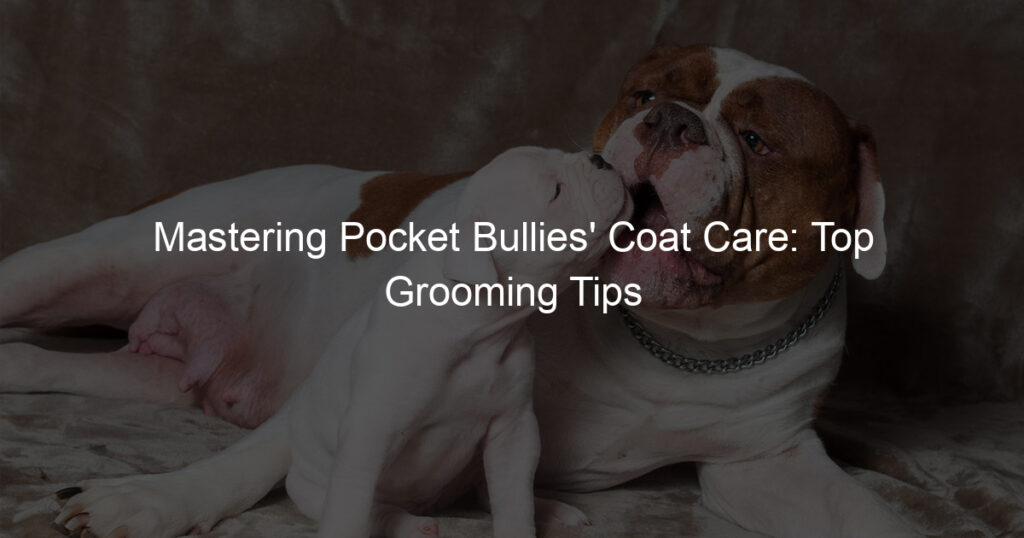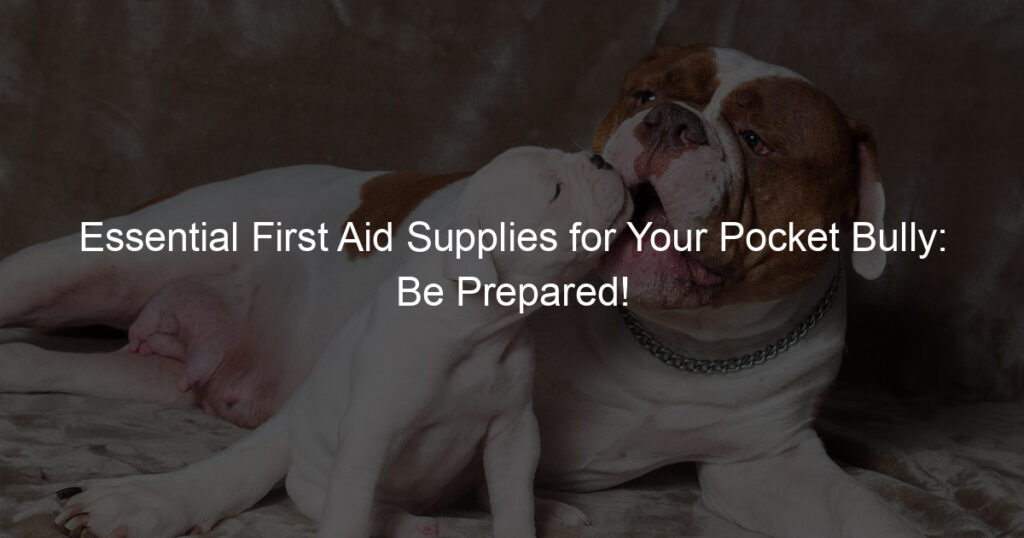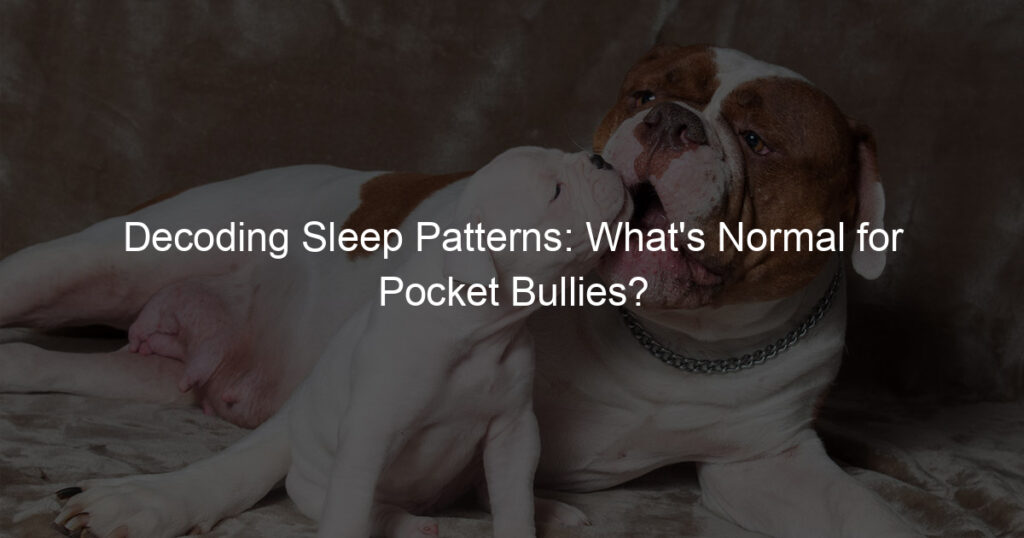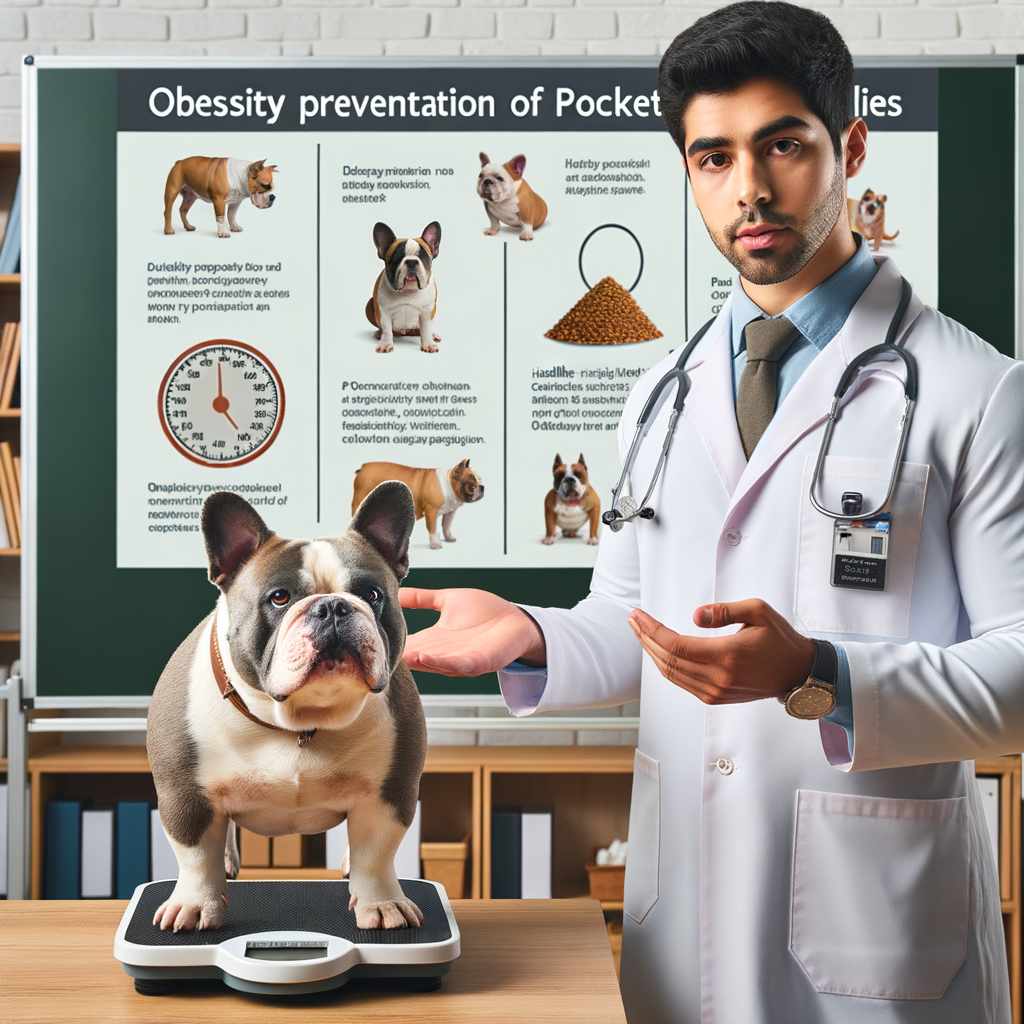
Introduction to Pocket Bullies
Welcome to our comprehensive guide about Pocket Bullies. This breed, known for its muscular build and friendly nature, has become increasingly popular among dog lovers. In this section, we will provide an overview of the breed, discuss their physical characteristics, and delve into some common health issues they face.
- Overview of the breed
- Physical characteristics
- Common health issues
The Pocket Bully is a smaller type of the American Bully, a breed that originated in the 1980s and 1990s. Despite their intimidating appearance, they are known for their gentle and friendly nature. They are excellent companions and are known for their loyalty and affection towards their families.
Pocket Bullies are compact and muscular, with a height ranging from 12 to 16 inches. They have a broad chest, a thick neck, and a large, square-shaped head. Their coat is short and glossy, and can come in a variety of colors. Despite their small size, they are strong and agile, with a weight that typically ranges from 30 to 50 pounds.
Like many breeds, Pocket Bullies can be prone to certain health issues. These include hip and elbow dysplasia, heart disease, and skin allergies. Obesity is also a common problem, as they love to eat and can easily gain weight if not properly managed. Regular vet check-ups and a balanced diet can help maintain their health and prevent these issues.
In the following sections, we will delve deeper into the topic of obesity in Pocket Bullies, including prevention strategies and tips for maintaining a healthy weight. Stay tuned for more information on this wonderful breed.
Understanding Obesity in Dogs
Obesity in dogs is a common health issue that can lead to serious health problems. It’s important to understand what it is and how it’s measured to ensure your dog maintains a healthy weight.
Definition of Canine Obesity
Canine obesity is a condition that occurs when a dog carries excess weight that can negatively impact their health. Let’s delve into the specifics of this condition.
- What is obesity in dogs?
- How is it measured?
Obesity in dogs is defined as a condition where a dog’s weight is 20% or more above the ideal weight for their breed and size. This excess weight can put a strain on their body and can lead to a variety of health problems, including heart disease, diabetes, and arthritis.
Obesity in dogs is typically measured using a system called the Body Condition Score (BCS). This system rates a dog’s body condition on a scale from 1 to 9, with 1 being underweight, 5 being ideal, and 9 being obese. A dog with a BCS of 7 or higher is considered obese. This system takes into account a dog’s overall body shape and the amount of fat covering their ribs and spine.
Understanding obesity in dogs is the first step towards ensuring your dog maintains a healthy weight. By recognizing the signs of obesity and knowing how it’s measured, you can take proactive steps to prevent this condition in your dog.
Causes of Obesity in Dogs
Obesity in dogs is a serious health concern that can lead to various complications. It’s crucial to understand the causes of obesity in dogs to prevent it effectively. Here are the three main causes:
- Overfeeding
- Lack of Exercise
- Underlying Health Conditions
Overfeeding is one of the leading causes of obesity in dogs. Just like humans, dogs need a balanced diet to maintain a healthy weight. However, when dogs consume more calories than they burn, they gain weight. It’s important to understand that not all dog foods are created equal. Some are high in calories and low in nutritional value, leading to weight gain. It’s also essential to measure your dog’s food and avoid giving them too many treats.
Exercise plays a vital role in a dog’s health. Dogs need regular physical activity to burn calories and maintain a healthy weight. However, many dogs don’t get the exercise they need, leading to weight gain. Regular walks, playtime, and other forms of physical activity can help keep your dog’s weight in check.
Sometimes, obesity in dogs can be caused by underlying health conditions. Conditions such as hypothyroidism and Cushing’s disease can lead to weight gain in dogs. If your dog is gaining weight despite a healthy diet and regular exercise, it’s important to consult with a veterinarian to rule out any underlying health conditions.
In conclusion, overfeeding, lack of exercise, and underlying health conditions are the main causes of obesity in dogs. By understanding these causes, you can take steps to prevent obesity and ensure your dog maintains a healthy weight.
Obesity Prevention in Pocket Bullies
One of the best ways to prevent obesity in Pocket Bullies is by focusing on their diet. A well-balanced diet can help maintain a healthy weight and reduce the risk of obesity-related health issues.
Pocket Bullies Diet
Let’s delve into the specifics of a Pocket Bullies diet, including the importance of a balanced diet, recommended food types, and feeding schedule.
-
Importance of a Balanced Diet
A balanced diet is crucial for Pocket Bullies. It provides them with the necessary nutrients they need to stay healthy and active. A balanced diet includes proteins, carbohydrates, fats, vitamins, and minerals. Without a balanced diet, your Pocket Bully may become overweight, leading to health problems like heart disease and diabetes.
-
Recommended Food Types for Pocket Bullies
Pocket Bullies should eat high-quality dog food that is rich in protein and low in fats. Foods like chicken, beef, fish, and vegetables are excellent choices. Avoid feeding them human food, as it can lead to obesity and other health issues. Always consult with your vet to determine the best diet for your Pocket Bully.
-
Feeding Schedule
Feeding your Pocket Bully at regular intervals can help prevent overeating and obesity. It’s recommended to feed adult Pocket Bullies twice a day, once in the morning and once in the evening. Puppies should be fed three to four times a day. Remember, the amount of food should be based on their age, size, and activity level.
In conclusion, a balanced diet, appropriate food types, and a regular feeding schedule are essential for preventing obesity in Pocket Bullies. Always consult with a vet to ensure your Pocket Bully is getting the right nutrition.
Pocket Bullies Exercise
Exercise is a crucial part of any dog’s life, especially for Pocket Bullies. Regular physical activity helps maintain a healthy weight, improves mental health, and keeps their bodies strong and flexible. Let’s explore the recommended daily exercise and suitable types of exercises for Pocket Bullies.
- Recommended Daily Exercise
- Types of Exercises Suitable for Pocket Bullies
- Walking or Jogging: A brisk walk or a light jog is a great way to keep your Pocket Bully fit. It also provides them with the opportunity to explore and interact with their environment.
- Fetch: Playing fetch is a fantastic way to provide both physical exercise and mental stimulation. It also helps strengthen the bond between you and your Pocket Bully.
- Agility Training: Agility training can be a fun and challenging way for your Pocket Bully to get their exercise. It involves them navigating through a course of obstacles, which keeps their mind and body active.
- Swimming: If your Pocket Bully enjoys water, swimming can be a great exercise. It’s a low-impact activity that’s easy on their joints, but still provides a good workout.
Experts recommend that Pocket Bullies should get at least one hour of exercise each day. This can be broken down into two or three shorter sessions. Remember, this is just a guideline. The exact amount of exercise your Pocket Bully needs can depend on their age, health, and individual energy levels.
It’s also important to note that exercise isn’t just about physical activity. It also provides an opportunity for your Pocket Bully to explore their environment, which is good for their mental stimulation.
Pocket Bullies are known for their strength and agility, so they enjoy a variety of exercises. Here are a few suggestions:
Remember, the key to a healthy and happy Pocket Bully is a balanced diet and regular exercise. Always monitor your dog during exercise to ensure they are not overexerting themselves. If you’re unsure about the best exercise routine for your Pocket Bully, consult with a vet or a professional dog trainer.
Healthy Weight for Pocket Bullies
Keeping your Pocket Bully at a healthy weight is crucial for their overall health and longevity. In this section, we will explore the ideal weight for Pocket Bullies and provide tips on how to maintain it.
Understanding the Ideal Weight
The ideal weight for a Pocket Bully can vary based on factors such as their age, sex, and overall health. However, a general guideline is that a healthy adult Pocket Bully should weigh between 30 to 40 pounds.
- How to determine the ideal weight
- How to maintain the ideal weight
One way to determine if your Pocket Bully is at a healthy weight is by using the Body Condition Score (BCS). The BCS is a scale from 1 to 9, with 1 being underweight and 9 being obese. A score of 4 to 5 is considered ideal. You can assess your dog’s BCS by feeling their ribs and looking at their waistline. If you can feel their ribs without a thick layer of fat and see a noticeable waist, your dog is likely at a healthy weight.
Maintaining your Pocket Bully’s ideal weight involves a balance of proper nutrition and regular exercise. Feed your dog a balanced diet that’s appropriate for their age, size, and activity level. Avoid overfeeding and limit treats to no more than 10% of their daily calorie intake. Regular exercise, such as walks and playtime, can also help keep your Pocket Bully at a healthy weight.
Remember, every dog is unique and what works for one may not work for another. Always consult with your vet before making any major changes to your dog’s diet or exercise routine.
Dealing with Overweight Pocket Bullies
It’s essential to keep your Pocket Bully at a healthy weight. Overweight dogs can suffer from numerous health issues, just like humans. Here, we will discuss how to recognize signs of overweight and what steps to take when your Pocket Bully is overweight.
- Recognizing signs of overweight
Recognizing the signs of overweight in your Pocket Bully is the first step towards ensuring their health. Here are some signs to look out for:
- Your dog has difficulty walking or running.
- There is no visible waistline when you look at your dog from above.
- You can’t feel your dog’s ribs when you touch their sides.
- Your dog seems tired or lazy more often than usual.
- Steps to take when your Pocket Bully is overweight
If you notice any of the above signs, it’s time to take action. Here are some steps to take:
- Consult a Vet: The first step is to consult a vet. They can provide a proper diet and exercise plan for your dog.
- Proper Diet: Feed your dog a balanced diet. Avoid giving them human food or overfeeding them.
- Regular Exercise: Make sure your dog gets plenty of exercise. This can be in the form of walks, playtime, or training sessions.
- Regular Check-ups: Regular vet check-ups are important to monitor your dog’s weight and overall health.
Remember, maintaining a healthy weight is crucial for your Pocket Bully’s overall health and happiness. By recognizing the signs of overweight and taking the necessary steps, you can ensure your dog lives a long, healthy life.
Pocket Bullies Nutrition
Feeding your Pocket Bully the right kind of nutrition is crucial for their health and well-being. Understanding their nutritional needs can help ensure they live a long, healthy, and happy life.
Understanding Nutritional Needs
Just like humans, Pocket Bullies require a balanced diet to stay healthy. Let’s delve into the essential nutrients your Pocket Bully needs and how to ensure they are getting enough of them.
- Nutrients essential for Pocket Bullies
- How to ensure your Pocket Bully is getting enough nutrients
Pocket Bullies, like all dogs, need a mix of proteins, fats, carbohydrates, vitamins, and minerals in their diet. Protein helps build strong muscles and promotes overall growth. Fats provide energy and keep the skin and coat healthy. Carbohydrates are a good source of energy, while vitamins and minerals are necessary for various bodily functions.
Feeding your Pocket Bully a balanced diet is the best way to ensure they are getting all the nutrients they need. High-quality commercial dog foods usually contain all the necessary nutrients in the right proportions. However, it’s important to read the label to ensure the food is appropriate for your dog’s age, size, and health condition. Regular vet check-ups can also help monitor your dog’s health and adjust their diet as needed.
Remember, every dog is unique and their nutritional needs can vary based on factors like age, size, and health condition. Always consult with your vet before making any significant changes to your Pocket Bully’s diet.
Choosing the Right Dog Food
When it comes to the health and well-being of your Pocket Bully, the food you choose plays a crucial role. There are many factors to consider when selecting the best dog food. Let’s delve into what you should look for in dog food and some recommended brands for Pocket Bullies.
- What to look for in dog food
- Nutritional Balance: The food should have a balance of proteins, carbohydrates, fats, vitamins, and minerals. This ensures your dog gets all the necessary nutrients for growth and health.
- Quality Ingredients: Look for foods with high-quality, natural ingredients. Avoid foods with artificial colors, flavors, or preservatives.
- Specific Needs: Some dogs may have specific dietary needs due to health conditions or allergies. Always consult with your vet before making any major changes to your dog’s diet.
- Recommended dog food brands for Pocket Bullies
Choosing the right dog food can be overwhelming with so many options available. Here are some key factors to consider:
Here are a few dog food brands that are highly recommended for Pocket Bullies:
| Brand | Key Features |
|---|---|
| Blue Buffalo Life Protection Formula | High-quality protein, wholesome grains, and a blend of fruits and vegetables. |
| Purina Pro Plan SAVOR Shredded Blend | Real meat as the first ingredient, fortified with live probiotics for digestive health. |
| Hill’s Science Diet Dry Dog Food | Specifically designed for breed size and weight, made with natural ingredients. |
Remember, every dog is unique and what works for one may not work for another. It’s always best to consult with your vet to determine the best diet for your Pocket Bully.
Pocket Bullies Weight Management
Managing the weight of your Pocket Bully is crucial for their overall health and well-being. One of the key components of weight management is regular check-ups with a vet.
Regular Check-ups
Regular check-ups are an essential part of maintaining your Pocket Bully’s weight. They not only help to monitor your dog’s weight but also detect any potential health issues early.
- Importance of regular vet visits
- What to expect during a check-up
Regular vet visits are crucial for your Pocket Bully’s health. These visits allow the vet to monitor your dog’s weight and ensure it’s within a healthy range. The vet can also detect any potential health issues early, which can help prevent serious problems down the line. Regular vet visits also provide an opportunity for you to ask any questions or express any concerns you may have about your dog’s health or weight.
During a check-up, the vet will typically weigh your Pocket Bully and conduct a physical examination. They may also ask about your dog’s diet, exercise routine, and general behavior. Based on this information, the vet can provide recommendations for maintaining or achieving a healthy weight for your Pocket Bully. They may suggest changes to your dog’s diet or exercise routine, or they may recommend further tests if they suspect any health issues.
In conclusion, regular check-ups are a vital part of managing your Pocket Bully’s weight. They help to ensure your dog is healthy and at a suitable weight, and they provide an opportunity for early detection of any potential health issues. So, make sure to schedule regular vet visits for your Pocket Bully.
Weight Management Plan for Pocket Bullies
Managing your Pocket Bully’s weight is crucial for their overall health and well-being. A well-structured weight management plan can help prevent obesity and related health issues. Let’s delve into the two key steps involved in this process: creating and implementing the plan.
- Creating a Weight Management Plan
- Implementing the Plan
Creating a weight management plan for your Pocket Bully involves understanding their unique dietary needs and exercise requirements. It’s important to consult with your vet to determine the ideal weight for your dog, based on their size, age, and breed characteristics.
Once you know the target weight, you can plan their diet accordingly. Remember, a balanced diet is key. Your Pocket Bully’s meals should include a good mix of proteins, carbohydrates, and fats. Also, consider their daily calorie intake. An average adult Pocket Bully requires about 900 to 1,400 calories per day, depending on their activity level.
Exercise is another crucial part of the weight management plan. Regular physical activity helps burn calories and keep your Pocket Bully fit and healthy. Plan for at least 30 minutes of exercise per day. This can include walks, playtime, or even agility training.
Once you have a weight management plan in place, the next step is to implement it. Consistency is key here. Make sure your Pocket Bully is getting the right amount of food and exercise every day.
Monitor your dog’s weight regularly. If you notice any significant changes, consult your vet immediately. They might suggest adjustments to the diet or exercise routine. Remember, the goal is to maintain a healthy weight, not to make your dog lose or gain weight rapidly.
Implementing a weight management plan requires patience and commitment. But the rewards – a healthier, happier Pocket Bully – are well worth the effort.
In conclusion, a well-structured weight management plan is a vital part of your Pocket Bully’s health care routine. It helps prevent obesity and ensures your dog stays fit and active. Remember, every dog is unique, and what works for one might not work for another. So, always consult with your vet before making any major changes to your dog’s diet or exercise routine.
Canine Obesity Prevention
Obesity in dogs is a serious health concern that can lead to various complications. However, with the right preventive measures, it is possible to keep your furry friend healthy and fit. Let’s explore some of these measures.
Preventive Measures
Preventing obesity in dogs involves a combination of regular exercise, a proper diet, and regular vet visits. These three elements work together to ensure your dog maintains a healthy weight and stays in good health.
- Regular Exercise: Exercise is crucial for dogs to burn off excess calories and maintain a healthy weight. It also helps to keep their joints flexible and their muscles strong. You can engage your dog in various activities such as walking, running, playing fetch, or even swimming. Remember, the type and amount of exercise will depend on your dog’s breed, age, and health condition.
- Proper Diet: A balanced diet is essential for your dog’s overall health. It should include the right amount of proteins, carbohydrates, fats, vitamins, and minerals. Avoid feeding your dog with human food or overfeeding them as it can lead to weight gain. Instead, opt for high-quality dog food that meets their nutritional needs. If you’re unsure about what to feed your dog, consult with your vet or a pet nutritionist.
- Regular Vet Visits: Regular vet visits are important to monitor your dog’s weight and overall health. Your vet can provide guidance on the right diet and exercise routine for your dog based on their breed, age, and health condition. They can also detect early signs of obesity and other health issues, ensuring timely intervention.
By implementing these preventive measures, you can help your dog maintain a healthy weight and prevent obesity. Remember, a healthy dog is a happy dog!
Recognizing Early Signs of Obesity
It’s important to know the early signs of obesity in your Pocket Bullies. This way, you can take steps to prevent it from becoming a serious health problem. There are two main areas to look at: physical changes and behavioral changes.
- Physical Changes
- Behavioral Changes
One of the first signs of obesity in Pocket Bullies is a noticeable increase in weight. You might observe that your dog is gaining weight rapidly or has become heavier than the average weight for its breed and age. In addition, you may notice that your dog’s waistline has disappeared, and its belly is sagging. Another sign is if you can no longer feel your dog’s ribs when you touch its side.
Behavioral changes can also indicate obesity. Your dog might become less active and show signs of fatigue or exhaustion after only a little exercise. It may also show an increased appetite, constantly begging for food or eating too quickly. These changes in behavior can be a sign that your dog is taking in more calories than it is burning, leading to weight gain.
Remember, these signs may not necessarily mean your dog is obese. They could be symptoms of other health issues. Therefore, it’s crucial to consult with your vet if you notice any of these changes. Early detection and intervention can help keep your Pocket Bullies healthy and happy.
Dog Breed Health Tips
Keeping your dog healthy is more than just feeding them the right food and getting them plenty of exercise. It also involves regular grooming, dental care, and mental stimulation. Let’s delve into these important aspects of maintaining your dog’s overall health.
Maintaining Overall Health
There are three main aspects to consider when it comes to maintaining your dog’s overall health: dental care, grooming, and mental stimulation. Each of these plays a crucial role in ensuring your dog is at their best.
- Importance of Dental Care
- Importance of Grooming
- Importance of Mental Stimulation
Dental care is often overlooked in dogs, but it’s just as important as it is in humans. Poor dental health can lead to serious health problems, including heart disease and kidney disease. Regular brushing and dental chews can help keep your dog’s teeth clean and healthy.
Grooming is not just about keeping your dog looking good. It’s also about maintaining their skin and coat health. Regular grooming can help prevent skin conditions, detect any abnormalities, and keep your dog comfortable. It’s also a great way to bond with your dog.
Mental stimulation is just as important as physical exercise for dogs. It keeps their mind sharp and can prevent behavioral problems. This can be achieved through training, puzzle toys, and interactive games.
In conclusion, maintaining your dog’s overall health involves a holistic approach that includes dental care, grooming, and mental stimulation. By paying attention to these aspects, you can ensure your dog is happy, healthy, and living their best life.
Common Health Issues in Pocket Bullies
Just like any other breed, Pocket Bullies can also face certain health issues. It’s important for owners to be aware of these potential problems and know how to recognize the signs. This way, they can ensure their beloved pet gets the necessary care as soon as possible.
- Recognizing Signs of Common Health Issues
- Lethargy: If your Pocket Bully is less active than usual or seems tired all the time, it could be a sign of illness.
- Loss of appetite: A sudden change in eating habits, especially if your dog is eating less than usual, can indicate a health problem.
- Weight loss or gain: Unexpected weight changes can be a sign of various health issues, from digestive problems to hormonal imbalances.
- Changes in behavior: If your Pocket Bully is acting out of character, it could be a sign they’re not feeling well.
- What to Do When Your Pocket Bully is Sick
- Monitor your dog: Keep a close eye on your Pocket Bully’s behavior and symptoms. This can help you provide accurate information to the vet.
- Contact a vet: If your dog’s symptoms persist or worsen, it’s time to contact a professional. They can diagnose the issue and suggest the best course of treatment.
- Follow the vet’s advice: Once your vet has provided a diagnosis and treatment plan, it’s crucial to follow it. This might involve giving your dog medication, changing their diet, or even scheduling surgery.
It’s crucial to keep a close eye on your Pocket Bully’s behavior and physical condition. Changes could indicate a health issue. Here are some common signs to look out for:
If you notice any of the above signs, it’s important to take action. Here’s what you can do:
Remember, your Pocket Bully’s health is in your hands. By recognizing the signs of common health issues and knowing what to do when your dog is sick, you can ensure they live a long, healthy, and happy life.
Maintaining Healthy Weight in Pocket Bullies
Ensuring that your Pocket Bully maintains a healthy weight is crucial for their overall health and well-being. A balanced diet, regular exercise, and consistent weight checks are all part of a comprehensive weight management plan. Let’s delve into the long-term strategies for maintaining a healthy weight in Pocket Bullies.
Long-term Weight Management
Long-term weight management in Pocket Bullies involves two key factors: consistency and adaptability. Let’s explore these elements in detail.
- Importance of Consistency
- Adjusting the Plan as Needed
Consistency is the cornerstone of any successful weight management plan. It’s not just about setting a routine, but also about sticking to it. Regular feeding times, consistent portion sizes, and daily exercise are all crucial for maintaining your Pocket Bully’s healthy weight. Remember, sudden changes in diet or exercise can lead to weight fluctuations, which can be harmful to your pet’s health.
While consistency is important, it’s equally crucial to be flexible and adjust your Pocket Bully’s weight management plan as needed. Factors such as age, health status, and activity level can affect your dog’s weight, and the plan should be adjusted accordingly. For instance, as your Pocket Bully ages, they may become less active and require fewer calories. Regular vet check-ups can help you keep track of these changes and adjust the plan as necessary.
By understanding the importance of consistency and the need for flexibility, you can ensure that your Pocket Bully maintains a healthy weight in the long run. Remember, a healthy weight contributes to a happier, healthier, and longer life for your beloved pet.
Success Stories
-
Case study 1: Pocket Bully’s successful weight loss journey
Meet Max, a delightful Pocket Bully who was once overweight. Max’s owner, Mrs. Johnson, noticed that Max was becoming less active and was struggling to perform simple tasks. After a visit to the vet, it was clear that Max was obese and needed to lose weight for his health.
With the help of a tailored diet plan and regular exercise, Max began his weight loss journey. Mrs. Johnson made sure Max had a balanced diet with the right amount of protein, carbohydrates, and fats. She also ensured that Max had regular exercise, including walks and playtime.
After six months, Max had lost a significant amount of weight and was much healthier. His energy levels increased, and he was able to enjoy his daily activities again. Max’s story is a testament to the importance of maintaining a healthy weight in Pocket Bullies.
-
Case study 2: Maintaining healthy weight in a Pocket Bully
Next, let’s look at Bella, another Pocket Bully who has successfully maintained a healthy weight. Bella’s owner, Mr. Smith, understood the importance of a balanced diet and regular exercise for Bella’s health.
Mr. Smith made sure Bella had a balanced diet, with the right amount of nutrients. He also ensured Bella had regular exercise, including walks and playtime. Regular check-ups at the vet also helped monitor Bella’s weight and overall health.
Thanks to Mr. Smith’s efforts, Bella has maintained a healthy weight and is a happy, active Pocket Bully. Bella’s story shows that with the right care and attention, it’s possible to maintain a healthy weight in Pocket Bullies.
